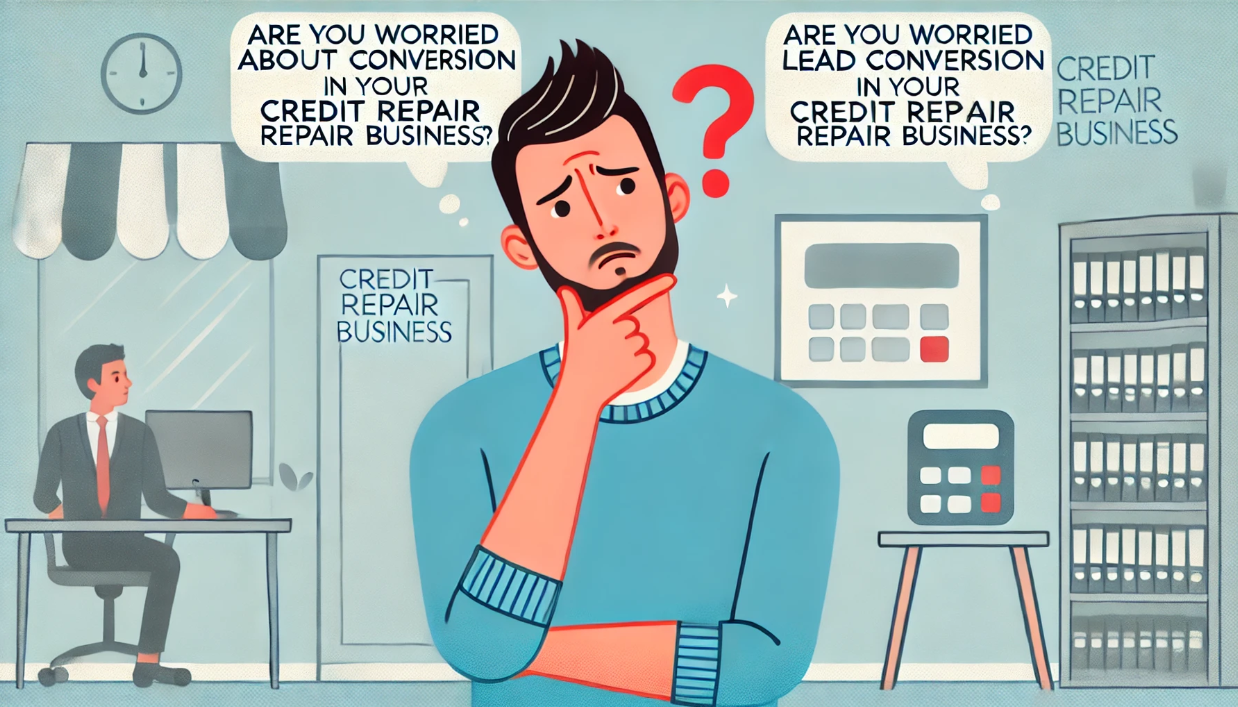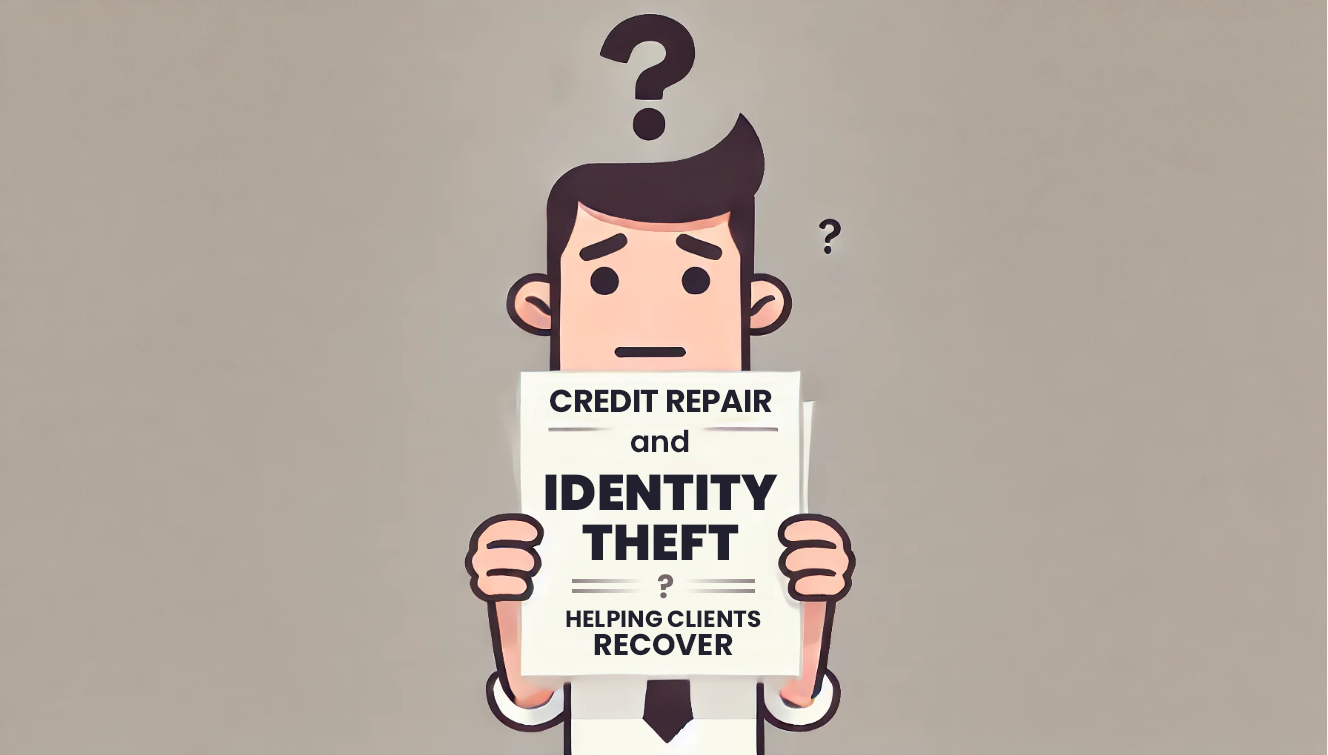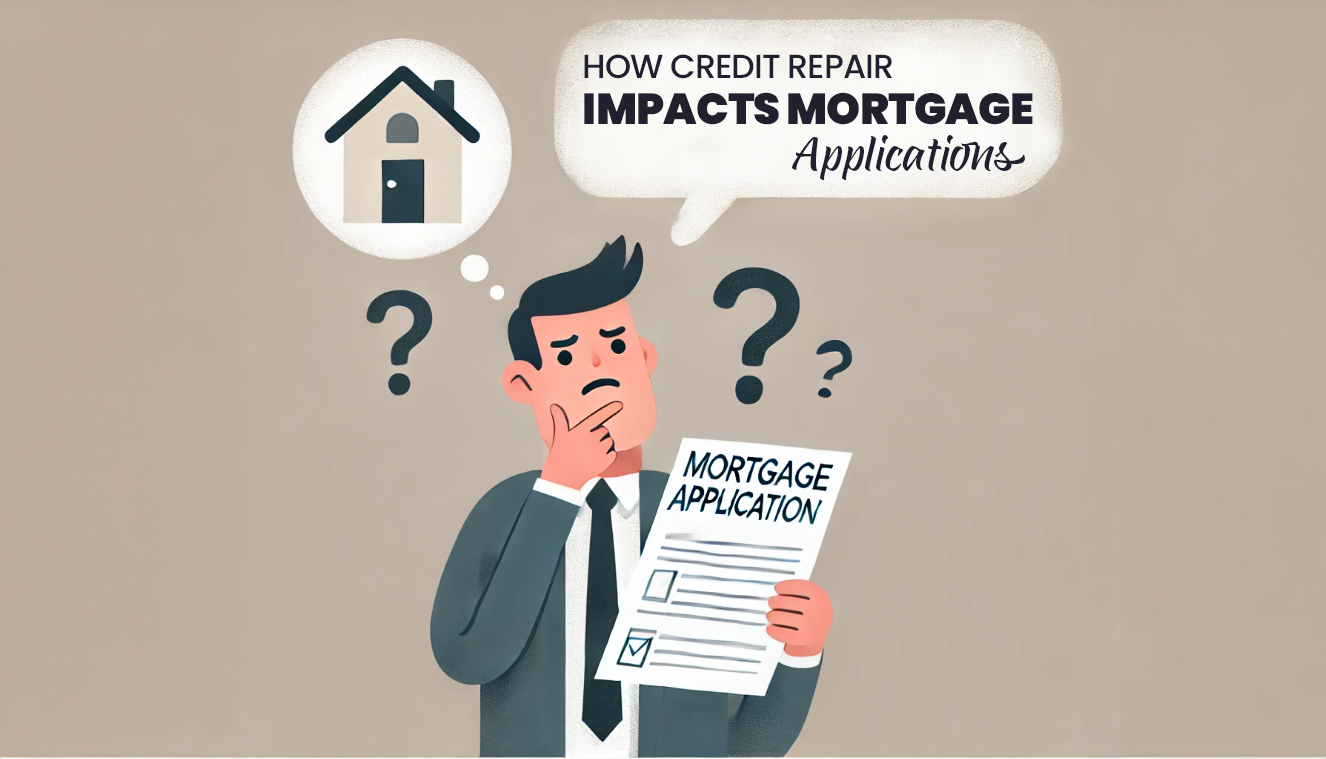The Power of Email Marketing for Credit Repair Companies
Welcome to the dynamic world of credit repair business, where effective communication isn’t just an advantage—it’s a necessity. Email marketing stands out as a crucial strategy for businesses aiming to enhance lead acquisition, sales, client relationships, processes, and deliver valuable content directly to those in need. In this competitive industry, the right message at the right time can significantly influence client satisfaction and business growth.
Email marketing, renowned for its exceptional return on investment, allows credit repair companies to directly engage with leads and clients through personalized communications. These interactions are critical in educating clients about their credit repair journey, providing updates, promoting events, selling services, upselling products or additional services, and maintaining transparency—a vital component in building trust.
However, the true potential of email marketing is realized when it is integrated with cutting-edge Credit repair business software. This powerful combination not only automates routine tasks but also ensures each message is crafted to meet the specific needs of diverse client segments. From compliance with stringent industry regulations to detailed analytics on campaign performance, Credit repair business software enriches every aspect of email marketing campaigns.
In this blog, we’ll explore how a credit repair business can harness the power of email marketing to enhance their operations and client relations. We’ll delve into the strategies for building a targeted email list, personalizing campaigns, ensuring legal compliance, and much more. By the end, you’ll understand why email marketing, when paired with robust Credit repair business software, is not just beneficial but essential for modern credit repair businesses looking to thrive in a competitive market. Join us as we unpack these topics to help you elevate your business to new heights.
-
Building a Targeted Email List
A high-quality, targeted email list is the cornerstone of successful email marketing campaigns, particularly in credit repair businesses where personalized and timely communication is crucial. Let’s dive into the strategies and best practices for building and managing an effective email list.
-
Strategies for Building a Quality Email List
Leverage Client Interactions:
Every touchpoint with a client is an opportunity to grow your email list. Whether it’s during the initial consultation, through your website, or at community outreach events, make sure you have a system in place to collect email addresses. Employ forms on your website, use digital sign-up sheets during events, and always follow up on inquiries with an invitation to subscribe to your newsletter or email updates.
Offer Value in Exchange for Emails:
Clients are more likely to provide their email addresses if they believe they will receive value in return. Offer free ebooks, webinars, or initial consultation discounts in exchange for their subscription. Content that educates them about credit repair processes or offers insights into financial health can be particularly compelling.
Utilize Social Media Platforms:
Promote your email sign-up form on your social media profiles, where many potential clients might already be engaging with your content. Create posts that direct traffic to your newsletter sign-up page or include links in your bio sections.
-
Importance of Opt-in Forms and Compliance
Opt-in Forms:
Ensuring that clients voluntarily subscribe to your emails is essential not only for building trust but also for complying with email marketing laws. Use double opt-in forms where possible; these require users to confirm their email address after signing up, thereby verifying that they genuinely wish to receive emails from your business. This method also helps maintain the quality and engagement levels of your email list.
Compliance with Data Protection Regulations:
Adherence to regulations such as the CAN-SPAM Act is critical. These laws dictate how personal information should be collected, handled, and protected. For instance, your opt-in forms must clearly state what subscribers should expect in terms of email frequency and content type, and you must provide an easy and obvious way to unsubscribe from your communications.
-
Segmenting Your Email List
- Segmenting your email list allows you to send more targeted, relevant messages to different groups within your audience. For example, you might divide your list by the client’s stage in the credit repair process:
- New inquiries / leads could receive emails that introduce your services and outline the basics of credit repair.
- Active clients might receive regular updates about the progress of their cases, tips for maintaining good credit, and notifications about changes in credit laws that might affect them.
- Past clients could be sent occasional check-ins and information on how to avoid future credit issues.
-
Personalizing Your Email Campaigns
Personalization in email marketing is not just a trend; it is a powerful strategy to increase engagement, foster loyalty, and significantly improve the effectiveness of your communication. For credit repair businesses, where the personal stakes for clients are high, customized communication can dramatically enhance the client experience. Let’s delve into the benefits of personalized emails, explore specific tactics for personalization, and examine the tools that can help automate these processes.
Benefits of Personalized Emails in Building Client Relationships
-
Enhanced Engagement:
Personalized emails capture attention. By addressing a client by name or referencing their specific circumstances, you make your communication feel more like a one-on-one conversation rather than a generic broadcast. This can lead to higher open rates, increased click-through rates, and more effective client engagement.
-
Improved Trust and Credibility:
When clients see that your emails consistently reflect their personal credit repair journey and needs, they are more likely to view your business as attentive and trustworthy. This is crucial in a field like credit repair, where trust is a foundational element of the client-business relationship.
-
Higher Conversion Rates:
Personalized emails are more likely to prompt action. Whether it’s a call to update personal information, a reminder to check credit reports, or advice on financial habits, tailored content addresses the specific needs or interests of the recipient, making them more relevant and actionable.
Examples of Personalization Tactics
-
Using the Client’s Name:
Starting an email with “Hello [Client’s Name],” is just the beginning. You can use the client’s name strategically throughout the email to maintain engagement, especially in call-to-action prompts.
-
Customization Based on Credit Situations:
Tailor your messages based on where each client is in their credit repair journey. For instance:
- For clients just starting out, your emails might focus on basic steps towards credit improvement and setting realistic expectations.
- For those in the midst of the process, provide updates on their case status, next steps, or documents required.
- For clients who have successfully improved their credit scores, send congratulations messages along with advice on how to maintain their new credit status.
-
Behavior-based Personalization:
Use data on how clients interact with your emails to further personalize content. For example, if a client frequently opens emails about credit score tips, they might be interested in a more detailed guide or webinar on that topic.
Tools and Techniques for Automating Personalization
-
Email Marketing Software:
Platforms like MailGun or MailChimp offer robust tools for personalizing emails at scale. These tools can dynamically insert names, personalized content, and more based on the data you have about each client.
-
CRM Integration:
Integrating your Credit Repair CRM system with your email platform allows for deeper personalization. Information like the client’s last service date, specific notes about their credit issues, and previous interactions can be used to automate highly personalized emails.
-
Segmentation Tools:
These tools enable you to send out emails based on client segments. You can automate different campaigns for different segments, ensuring that the content is highly relevant to each group’s specific needs and status.
-
A/B Testing:
To refine your personalization tactics, use A/B testing to see which personalized elements perform best. Test different versions of subject lines, email body text, or calls to action to continuously improve the relevance and effectiveness of your emails.
-
Content That Educates and Engages
In the realm of credit repair, where consumer trust and education are key, the content of your emails can significantly influence how clients perceive and interact with your service. Effective email content not only informs but also engages and retains clients by providing them with valuable insights and actionable advice.
Below, we delve deeper into how you can craft content that educates, engages, and positions your business as a trusted authority in credit repair.
-
Designing Emails to Educate Clients About Credit Repair Processes and Financial Habits
Step-by-Step Guides:
Break down the credit repair process into digestible, easy-to-follow steps. These guides can help demystify the process for new clients and set clear expectations about the journey ahead.
Financial Education:
Include content that teaches clients about broader financial concepts, such as budgeting, debt management, and the factors that affect credit scores. This not only helps them in their immediate credit repair journey but also empowers them with knowledge to maintain financial health in the long run.
FAQs:
Regularly include a frequently asked questions section that addresses common concerns or misconceptions about credit repair. This helps in reducing confusion and building confidence among your clients.
Interactive Content:
Use quizzes or polls to make learning about credit repair interactive and fun. This type of content can also provide you with valuable insights into the concerns and needs of your clients, allowing you to tailor your services and communications effectively.
-
How Informative Content Positions Your Business as a Trusted Advisor
Showcasing Expertise:
Well-researched and accurate content reflects your expertise and commitment to staying abreast of all things related to credit repair. This builds credibility and trust with your clients, who are likely seeking reassurance that they are in capable hands.
Proactive Information Sharing:
By anticipating and addressing potential questions or issues through your emails, you position your business as proactive and client-focused. This approach not only educates but also reduces anxiety for clients, reinforcing your role as a guide through their credit repair process.
Regular Updates:
Sending out regular updates on changes in credit laws, news, and trends related to financial health positions your business as a current and reliable source of information. This ongoing communication keeps clients engaged and reassured that they are receiving the most current advice.
-
Types of Content That Engage and Retain Clients
Success Stories and Testimonials:
Sharing real-life success stories of past clients can be highly motivating for current clients. These narratives not only serve as proof of your business’s effectiveness but also help in humanizing the process and giving clients a tangible vision of success.
Tips and Advice:
Regular tips on improving credit scores, avoiding common financial pitfalls, or understanding credit reports can provide ongoing value to clients, encouraging them to stay engaged with your emails.
Legislative Updates:
Provide summaries of recent legislative changes that affect credit repair and personal finance. Explaining how these changes directly impact clients can help them feel informed and in control of their financial destinies.
Video Content:
Including short, informative videos in your emails can boost engagement, especially for complex topics that are easier to explain visually. Videos are also more likely to be viewed and shared, increasing the reach of your messaging.
Newsletters and Blogs:
Create a regular newsletter or blog that encapsulates all the above elements into a comprehensive, easy-to-digest format. Newsletters can serve as a monthly touchpoint to keep your business top-of-mind and reinforce your status as a trusted advisor.
By investing time and effort into creating educational and engaging content, your credit repair business can build lasting relationships with clients. This approach not only aids them in their immediate credit repair needs but also empowers them to make better financial decisions in the future, fostering a sense of loyalty and trust that is invaluable in the credit repair services sector.
-
Navigating Compliance in Email Marketing
For credit repair businesses, navigating the complex web of legal compliance in email marketing is not just a best practice—it’s an absolute necessity. The consequences of non-compliance can be severe, ranging from hefty fines, damage to your company’s reputation, or even a forced shutdown of your credit repair business. Understanding and adhering to legal standards is crucial to maintaining the trust of your clients and the legitimacy of your business.
-
Key Legal Considerations Specific to the Credit Repair Industry
Credit Repair Organizations Act (CROA):
One of the primary laws governing the credit repair industry, CROA sets strict guidelines to protect consumers from deceptive practices. It requires credit repair companies to provide a written contract specifying the services to be performed, along with a three-day right to cancel without charge. Importantly, it prohibits the collection of any fees before services are fully performed, which must be considered in any promotional content.
Fair Credit Reporting Act (FCRA)
Fair Credit Reporting Act (FCRA) ensures that information in consumer credit reports is accurate, complete, and private. Emails discussing or promising to address report inaccuracies must comply with FCRA regulations. It’s crucial to provide accurate information about what your credit repair services can legally accomplish.
CAN-SPAM Act
Specific to email marketing, the CAN-SPAM Act enforces rules against spamming practices. It requires transparency about who is sending the email, honest subject lines, a valid physical address of the sender, and an easy way for recipients to opt-out of future emails. Compliance with this act is essential for all your email marketing efforts.
-
Ensuring All Marketing Emails Adhere to Industry Standards and Laws
Regular Training and Education:
Keep your team educated about the latest in compliance regulations. Regular training sessions can help ensure that everyone understands the legal boundaries and how to operate within them.
Clear Policies and Procedures:
Develop clear written internal policies and procedures for crafting and sending emails. This should include steps for approval by a compliance officer or legal advisor before any campaign is launched.
-
The Implications of Non-Compliance and How to Mitigate Risks
Reputational Damage:
Non-compliance can lead to public scrutiny and loss of trust among your client base. This reputational damage can be more costly in the long term than any fines levied.
Financial Penalties:
Failing to comply with laws like CROA, FCRA, and the CAN-SPAM Act can result in significant financial penalties. These can cripple a business financially and impede its ability to operate.
Mitigating Risks:
To mitigate these risks, implement robust compliance checks within your email marketing software. Automate as much of the compliance process as possible to reduce human error. Regular audits and checks should be part of your routine to ensure all content meets legal standards before it goes out.
Archiving Communications:
Maintain an archive of all email communications, along with records of consumer consent and other compliance-related documentation. This will be invaluable in defending your business should any legal issues arise.
Analyzing and Optimizing Email Campaigns
In the competitive field of credit repair, the ability to analyze and optimize your email campaigns is crucial for staying ahead. Understanding how your campaigns perform can help you refine your strategies, improve client engagement, and ultimately drive more conversions. This section delves into the key metrics to track, the tools that can facilitate this analysis, and techniques for refining your email strategies based on the insights gained.
-
Importance of Tracking Metrics
Open Rates:
This metric measures how many people are opening your emails. It indicates how effective your subject lines are at capturing attention. High open rates generally suggest that your subject lines resonate with your audience or that your sender reputation is strong.
Click-Through Rates (CTR):
Once your email is opened, the click-through rate tells you how many people engaged with the content enough to click on links included in the email. This is a direct measure of the relevance and appeal of your email content.
Conversion Rates:
Perhaps the most critical metric, the conversion rate measures how many recipients are taking the desired action, whether that’s filling out a form, signing up for a webinar, or making a payment. This metric helps evaluate the ultimate effectiveness of each email in contributing to your business goals.
-
Tools and Techniques for Analyzing Email Campaign Performance
Analytics Platforms:
Tools like Google Analytics can be integrated with your email marketing software to track how email campaigns contribute to your traffic and conversion goals. These platforms provide insights into user behavior after they click through from your email, allowing you to see how they interact with your website.
Segmentation Tools:
Advanced segmentation capabilities can help you analyze how different groups respond differently to your campaigns. This can be crucial for tailoring your messages more effectively to diverse segments of your market.
-
Tips for A/B Testing and Refining Email Strategies Based on Analytics
Test Subject Lines:
A/B testing different subject lines can help you understand what captures your audience’s attention. Try varying the length, tone, and content of subject lines to see what works best.
Test Email Content and Layout:
Experiment with different formats, from text-heavy emails to those rich in graphics or videos. Test how placing calls-to-action at various points in your email affects click-through and conversion rates.
Timing and Frequency:
Test sending your emails on different days of the week or times of day to find when your audience is most likely to open and engage with your emails. Adjust the frequency of emails (daily, weekly, bi-weekly) to determine optimal engagement without causing fatigue.
Personalization Elements:
Try different levels of personalization, from basic (such as using the client’s name) to more advanced (content tailored based on past behavior or engagement history) to see how it affects engagement and conversion.
Iterative Process:
Use the insights gathered from these tests to continually refine your email strategies. Email marketing is not set-and-forget; it requires ongoing adjustments and optimization based on actual performance data.
-
Enhancing Email Campaigns with Credit Repair Business Software
Your Credit repair business software should offer invaluable tools and features that can revolutionize the efficiency and effectiveness of your email marketing campaigns. From automating repetitive tasks to facilitating personalized communication campaigns. Integrating Credit repair business software into your email marketing efforts can significantly enhance lead / client engagement and drive better outcomes. Let’s explore how credit repair business software can elevate your email campaigns and streamline your communication processes.
Overview of How Credit repair business software Enhances Email Campaigns
-
Centralized Client Data Management:
Credit repair business software serves as a centralized hub for storing client information, including credit reports, contact details, and communication history. This comprehensive database allows you to tailor your email campaigns based on individual client profiles and interactions, ensuring that your messages resonate with their specific needs and circumstances.
-
Streamlined Communication Workflows:
By automating routine communication tasks, such as sending out welcome emails, progress updates, or appointment reminders, Credit repair business software frees up valuable time and resources. This streamlining of communication workflows ensures that clients receive timely and relevant information at every stage of their credit repair journey, leading to improved satisfaction and retention rates.
Automation Features That Streamline Communication and Follow-Up Processes
-
Automated Email Sequences:
Credit repair business software enables you to create automated email sequences that trigger based on predefined client actions, milestones, campaign lists, or tags. For example, you can set up a sequence to automatically send follow-up emails after a consultation, reminder emails for upcoming appointments, or progress updates at regular intervals. This automation ensures consistent communication with clients without requiring manual intervention.
-
Scheduled Email Campaigns:
With Credit repair business software, you can schedule email campaigns in advance, allowing you to plan and execute your marketing strategies more efficiently. Whether it’s a monthly newsletter, promotional offer, or educational series, scheduling emails ahead of time ensures that your messages are delivered consistently and on time, maximizing their impact.
How Software Integration Supports Personalized and Segmented Email Strategies
-
Integration with Client Profiles:
Seamless integration of credit repair software with client profiles enables access to valuable data for email campaigns. Leverage client data within email marketing campaigns through seamless integration of credit repair software. Enable personalized communication by dynamically inserting client-specific information like name, account data, credit score into emails. This integration enhances emails by including round, progress status, or recommended actions for individual clients.
-
Segmentation and Targeting:
Your credit repair business software should be able to segment, tag, or build campaign lists to target your email list based on various criteria such as: but not limited to:
- New lead
- New activation
- New Issue
- Credit repair progress
- Drops in score
- Conversion from lead to client/customer
- failed payment
- Credit repair dispute process monthly progress update
- And more
Segmentation tailors email content for specific client segments, delivering targeted messages. Messages resonate with each audience segment through tailored email content. Whether it’s offering credit tips for beginners or advanced strategies for experienced clients, segmentation ensures that your emails and communication are tailored to meet the unique needs and preferences of each group.
Conclusion:
In the dynamic landscape of credit repair, effective communication is paramount to success. Businesses unlock benefits by combining robust email marketing strategies with advanced credit repair software. Synergy between email marketing and credit repair software propels businesses toward goal achievement.
By harnessing the power of email marketing, credit repair businesses can establish meaningful connections with their clients, delivering personalized and informative content that resonates with their unique needs and circumstances. Email marketing educates clients on credit repair and fosters trust, engagement, and conversions. It serves as a cornerstone in providing timely updates and advice for clients.
Moreover, the integration of credit repair business software amplifies the impact of email marketing efforts, streamlining communication workflows, and enhancing operational efficiency. With automation features that automate routine tasks and segmentation capabilities that enable targeted messaging, Credit repair business software empowers businesses to deliver highly personalized and impactful email campaigns that yield tangible results.
Embrace the synergy of email marketing and credit repair software for maximizing outreach. Recognize it as a powerful tool for driving business growth in credit repair. Businesses can elevate client experience and differentiate themselves by leveraging both areas effectively. Achieving sustainable success in the competitive credit repair industry is possible through leveraging both areas effectively.
References:
- email marketing campaigns
- CAN-SPAM Act
- Segmenting your email
- Personalization in email marketing
- Credit Repair CRM system
- CROA
- Fair Credit Reporting Act (FCRA)
- Credit repair education
- Open Rates
- Click-Through Rates (CTR)
- Conversion Rates
- Google Analytics
Comments are closed.





